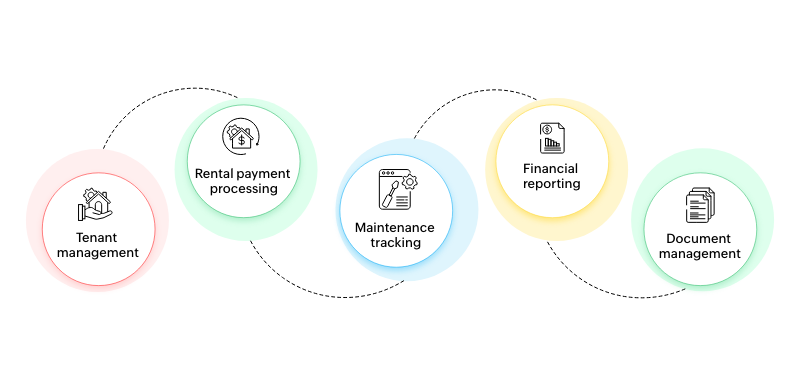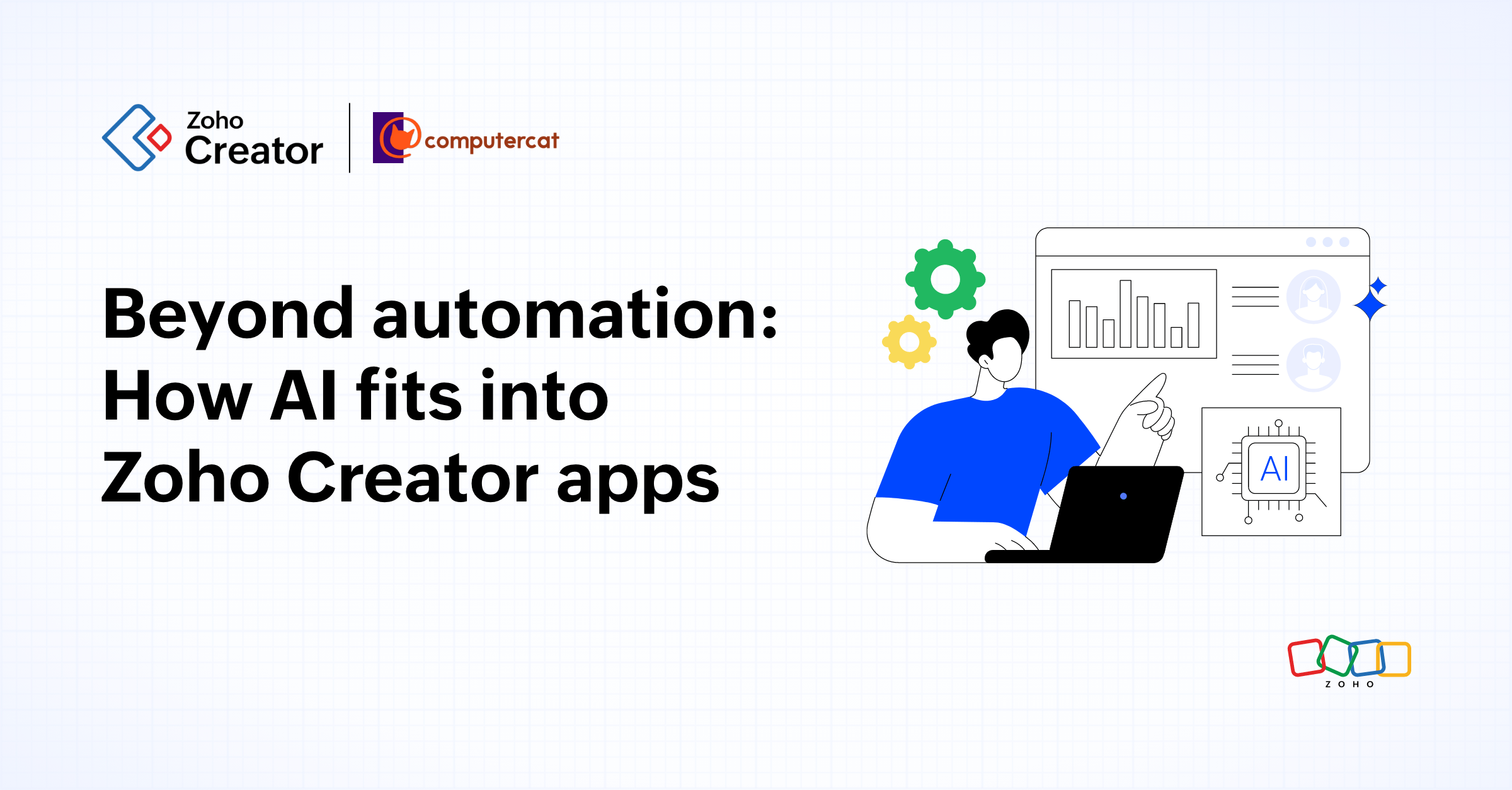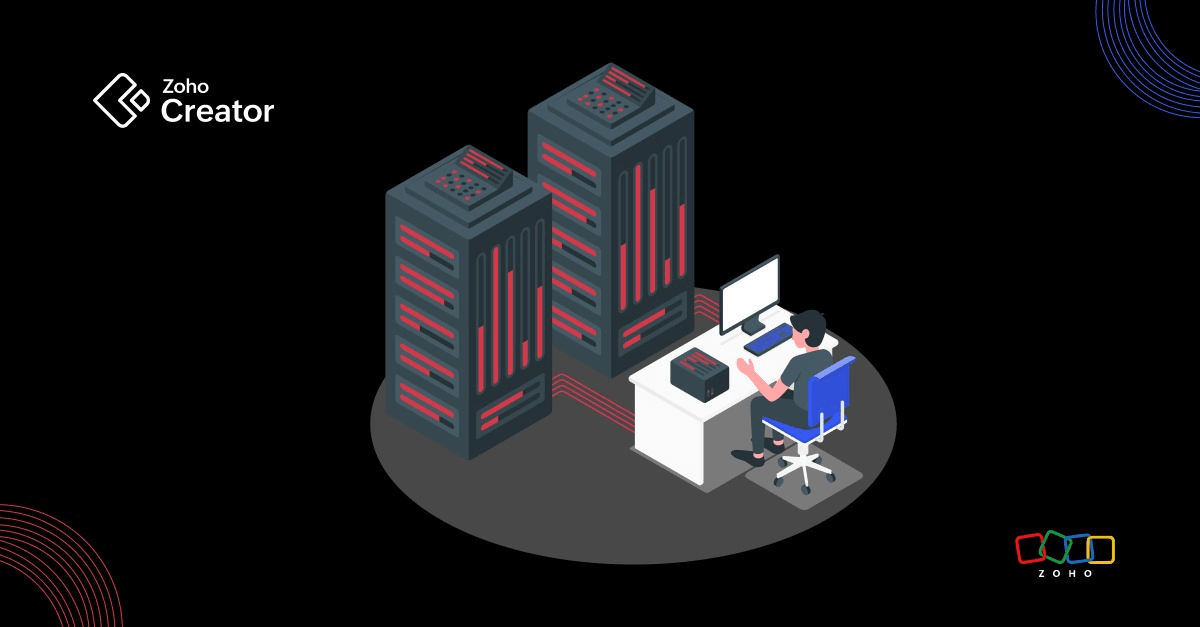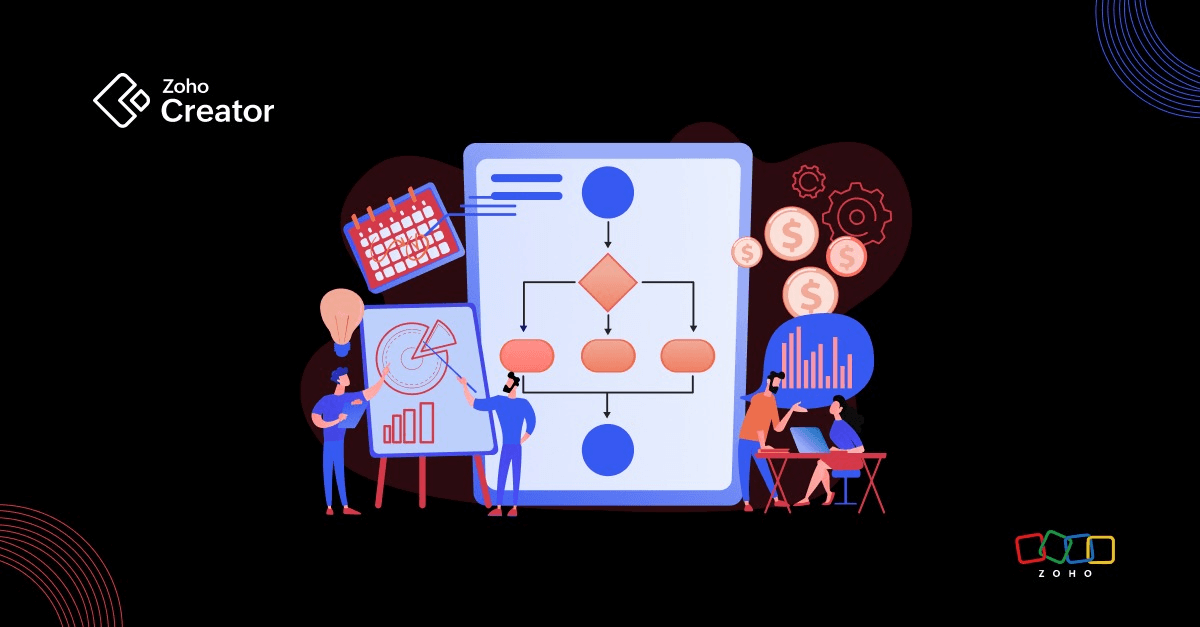- HOME
- Know Your Tech
- Everything you need to know to automate property and rental management
Everything you need to know to automate property and rental management
- Last Updated : June 25, 2025
- 568 Views
- 10 Min Read
Property management has become increasingly complex; juggling tenant communication, lease agreements, maintenance requests, and payment tracking can easily overwhelm even the most organized professionals. With so many moving parts, it's no wonder property managers are feeling the strain. In fact, research shows that nearly 60% of property managers say manual processes slow down their operations and increase errors. This friction often leads to missed opportunities, unhappy tenants, and increased costs.
TL;DR: Low-code platforms help property and rental managers build custom apps to automate key operations—from tenant onboarding and lease management to rent collection, maintenance tracking, and financial reporting. Using drag-and-drop builders, teams can create modules for property records, lease contracts, service requests, and analytics dashboards. These apps can also include tenant portals and automated workflows that reduce manual work, improve accuracy, and centralize communication.
If you’re in real estate or oversee rental properties, you know how much time and effort these tasks demand. The good news? Automating property and rental management is changing the game. With the right tools, you can simplify workflows, reduce errors, and gain real-time visibility into your operations.
Learn how automated property management can streamline your processes, increase efficiency, and drive growth. Whether you're a real estate owner or property manager, this guide will provide practical tips for smarter property management.
What is smart property management automation?
Smart property management automation takes the traditional principles of property management and elevates them through technology. While smart property management focuses on organizing and streamlining property operations, automation specifically uses software and digital tools to handle repetitive tasks, reduce manual effort, and improve accuracy across the board.
This evolution emerged as manual methods, like paper records, phone calls, and spreadsheets, became inefficient for managing growing property portfolios. Automation integrates various management functions into a single platform.
Why does it matter for your business?
Managing multiple properties manually can lead to errors, missed deadlines, and frustrated tenants. Automated systems help reduce these risks by providing clear visibility into operations and keeping information organized in one place. This means you make fewer mistakes and get more time to focus on growing your portfolio and improving tenant satisfaction.
Key components of smart property management automation

A modern automated property management system usually includes:
Tenant management: Online applications, lease signing, and communication portals keep tenants informed and involved.
Rental payment processing: Secure online payments and automatic reminders reduce late fees and improve cash flow.
Maintenance tracking: Requests can be logged, assigned, and tracked digitally, ensuring timely repairs and clear accountability.
Financial reporting: Real-time access to income and expenses helps you make informed decisions and simplifies tax preparation.
Document management: One-platform storage for leases, inspection reports, and notices reduces lost paperwork.
Automation is reshaping property management. Now let’s explore its key benefits and see how real businesses are leveraging smart systems to streamline operations and boost efficiency.
Smart property management automation: Benefits and a case study
Think of a property management app as a one-stop shop—instead of juggling spreadsheets, phone calls, and paperwork, you get one platform that keeps leases, rent payments, maintenance requests, and tenant communications all in one place.
Emerging technologies have significantly transformed property management, including:
IoT devices: Enhance operational efficiency by connecting devices for smarter management.
AI chatbots: Provide round-the-clock support and instant responses to tenant inquiries.
Smart locks: Offer key-less convenience, improving tenant experience and security.
Smart sensors: Detect potential issues like leaks or energy inefficiencies before they escalate.
Key benefits of property management automation
Automated rent reminders and payment processing: Ensure timely collections and reduce late payments with secure online payment gateways and scheduled notifications.
Streamlined maintenance scheduling and tracking: Digitally log, assign, and monitor maintenance requests, reducing delays and improving transparency for tenants and managers alike.
Efficient tenant screening and onboarding: Automate application processing and background checks to speed up tenant placement without sacrificing thoroughness.
Centralized document storage and management: Keep leases, inspection reports, and notices organized and easily retrievable on a secure digital platform.
Real-time financial reporting and insights: Access up-to-date income and expense data that simplifies budgeting, forecasting, and tax preparation.
Data analytics for proactive decision-making: Analyze tenant metrics, payment trends, and maintenance patterns to identify risks early and optimize property performance.
24/7 tenant communication via AI chatbots: Provide instant responses to tenant inquiries, improving satisfaction even outside office hours.
Integration with third-party software: Connect seamlessly with accounting, CRM, and other platforms to unify your property management ecosystem.
Case study: PropertyAngel’s automation journey with Zoho Creator
Take PropertyAngel, for example. Managing rental contracts and tenant info across several locations was a headache, so they turned to Zoho Creator to build a custom automated solution tailored to their needs. Now, lease management, tenant onboarding, and payment tracking happens smoothly, without piles of paperwork or endless follow-ups.
The result? Less manual work, fewer errors, and tenants who feel more connected and cared for. This automation boosted their efficiency and allowed their property managers to focus on delivering better service.
But, while the benefits of automation are clear, success ultimately depends on how it's implemented. Without a solid strategy, even the best tools can fall short.
Best practices for efficient property and rental management automation for businesses

Balancing various property and rental management responsibilities can be time-consuming, but getting it right helps you save time, reduce costs, and improve tenant relationships. Automation helps smooth out the bumps by making core processes simpler and faster. Here are some automation practices that really make a difference:
Keep communication clear and easy
Automated messages and AI chatbots mean tenants get quick answers at any time, without your team getting overwhelmed. Self-service portals let tenants handle things like maintenance requests or payment updates on their own time, which cuts down on back-and-forth and keeps everyone in the loop.
Make tenant onboarding and leasing hassle-free
Automate applications, background checks, lease signing, and even marketing to speed up move-ins and reduce vacancies. Using e-signatures and online forms means tenants can complete everything from anywhere, while your leasing team focuses on closing deals and building relationships.
Stay ahead with smart maintenance
Use AI-powered tools to predict when repairs might be needed before problems pop up. These tools analyze historical maintenance data, track patterns, and monitor real-time conditions to forecast when equipment or systems may fail. Automated scheduling and vendor assignments make sure fixes happen fast, and tenants get real-time updates so they’re never left wondering.
Simplify payments and keep your books clean
Automated rent reminders and flexible payment options are just the start. Smart systems sync payments directly with accounting tools, flag any issues, and create accurate reports. That means fewer errors and less chasing overdue rent.
Organize all your documents in one place
Store leases, inspection reports, and tenant communications securely online. Automation handles renewals and contract updates smoothly by limiting missed deadlines.
Stay compliant without the stress
Regulations can change fast. Automation keeps track of lease expirations, safety inspections, and certifications, sending you reminders so nothing slips through the cracks. Plus, digital records make audits easier.
Turn data into smart decisions
With automated analytics, you get insights on occupancy, maintenance costs, and tenant feedback. AI tools can highlight which properties need attention or where the market is heading, helping you plan smarter.
Cut costs but keep service top-notch
Automation helps you avoid costly emergency repairs, reduces manual follow-ups, and eliminates mistakes. That adds up to better margins without cutting corners on tenant experience.
Go green with smart energy management
IoT sensors track energy use and help optimize things like heating and cooling. Staying eco-friendly not only cuts bills but also attracts tenants looking for sustainable living spaces.
Connect your tools for smooth workflow
Integrating your CRM, accounting, marketing, and maintenance platforms means less data jumping around and more time for your team to focus on what matters. Plus, it makes growing your portfolio easier.
How Zoho Creator’s property management software supports these practices
An ideal property management system (PMS) should encompass a range of features to streamline operations and enhance efficiency.
Tenant portal and communication: Facilitates instant communication and hassle-free rent payments by offering multiple payment options and automated reminders—easy for tenants to pay on time and reduces late fees for you
Automated workflows: Streamlines onboarding and maintenance tracking, ensuring that nothing falls through the cracks
Secure document storage: Centralizes and secures all property-related documents, keeping you audit-ready and organized
Customizable reports: Provides real-time insights into every aspect of your portfolio, aiding in informed decision-making
Zoho Creator’s property management system bundles these essential features into one easy-to-use platform tailored for you.
Legal and regulatory compliance in smart property and rental management
Real estate businesses face a complex web of regulations that must be complied with, including:
Tenant rights laws
Fair housing policies
Building safety codes
Data privacy standards
Missing deadlines for lease renewals, safety inspections, or security deposits can lead to hefty fines or legal disputes. Staying informed about local and federal laws protects your business and tenants alike.
1. Use technology to keep compliance on track
Manual tracking of legal obligations can be risky and time-consuming. Technology steps in as your reliable assistant, automatically sending reminders for lease expirations, inspection dates, and certification renewals.
Digitizing documents means leases, notices, and compliance certificates are securely stored and instantly accessible during audits or tenant inquiries. These systems also log actions taken, providing a clear audit trail if questions arise.
2. Automation’s role in hassle-free compliance
Customized workflows can require approval before leases are renewed or rents adjusted, ensuring compliance checks happen every time.
Background screenings and credit checks can be triggered automatically before tenant move-ins. And in areas with strict rent control or eviction laws, automation helps enforce policies consistently, reducing the risk of human error and legal exposure.
For example, a 2024 case study by Luther Systems indicates that automation helped improve the long-term lease renewal process by making it more reliable, compliant, and efficient.
3. Proactive compliance reduces costs and builds trust
Beyond avoiding fines, proactive compliance signals professionalism to tenants and investors. When tenants know you follow regulations and keep their information secure, they’re more likely to trust you and renew leases. Investors and lenders also view compliant management as less risky, potentially improving your financing options.
While the benefits of smart property and rental management are clear, adopting new systems isn’t without its challenges. Understanding and addressing these hurdles early can make the transition smoother and set your business up for lasting success.
Challenges in adopting smart property and rental management systems
Implementing technology can feel daunting if your team is used to traditional methods. Here are some common challenges you might face when moving to automated systems and learn how to overcome them:
Overcoming technological barriers: Introducing new technology often means change for your team. Some staff may be hesitant or find it challenging to adapt to new systems. To address this, choose user-friendly software designed with property managers in mind. Invest in thorough training and ongoing support to build confidence. Involving your team early in the selection process also helps ease adoption and encourages feedback that can shape the rollout.
Addressing data privacy and security concerns: Property management involves handling sensitive tenant data like personal details and payment information. It’s essential to select platforms that comply with regulations such as GDPR or CCPA and offer robust security features like encryption and multi-factor authentication. Regularly review your system’s security protocols and communicate privacy practices clearly to tenants and stakeholders. This transparency builds trust and safeguards your reputation.
Managing upfront costs while focusing on long-term value: Switching to an automated system can require a significant initial investment, which may feel risky for smaller businesses. However, it’s important to weigh these costs against the time saved on manual tasks, reduced errors, and faster decision-making. Look for solutions like Zoho Creator that offer a free trial and scalable pricing for modular features, so you pay only for what you need. Phased implementations can also help spread costs and demonstrate quick wins, building a strong case for continued investment.
Ensuring smooth integration with existing systems: Most businesses already use software for accounting, communication, or tenant screening. A new property management platform should integrate seamlessly with these tools to avoid double work and data silos. Before committing, verify the system’s compatibility with your current software stack, including APIs or built-in connectors.
Maintaining flexibility for future growth: Your property portfolio is likely to grow, and your management tools should be able to scale with you. Selecting a platform that supports adding users, properties, and features without costly upgrades or downtime protects your investment and avoids disruption as you expand.
Navigating change management: Adopting new technology also requires process changes. Clear communication about benefits and expected outcomes helps align your team and stakeholders. Setting realistic timelines and milestones ensures steady progress without overwhelming your staff.
By preparing for these challenges thoughtfully, you can smooth your transition to smart property management and utilize its full potential for your business.
Why property management automation is a necessity
Effective property management means you have to adopt smart, automated solutions that simplify your work and improve results. From streamlining tenant communication and onboarding to automating rent payments and maintenance tracking, technology boosts efficiency and tenant satisfaction. Staying compliant and using data insights helps protect and grow your property portfolio.
Rental management benefits from reduced costs, better tenant experiences, and sustainable practices, adding real value to your properties. Adopting new systems comes with challenges, but thoughtful planning and the right tools can make the transition smooth and rewarding.
That’s why Zoho Creator helps you build proper property management software that stands out as an ideal solution for real estate businesses looking to modernize their operations. It offers a low-code, user-friendly, secure, and flexible platform designed for technical and non-technical folks alike. With Zoho Creator, you can reduce manual work and focus on growing your business while keeping tenants happy.
FAQs
1. What is a property management system?
A property management system (PMS) is software that automates and streamlines tasks like leasing, maintenance, and rent collection, enhancing operational efficiency for property managers.
2. What is PMS in the hotel industry?
In the hotel industry, PMS refers to software that manages reservations, guest check-ins/outs, billing, and housekeeping while integrating with other hotel systems to optimize operations.
3. What are the steps in property management?
The key steps in property management include property acquisition, tenant onboarding, lease management, maintenance coordination, rent collection, and financial reporting to ensure smooth operations and tenant satisfaction.
 Merlin
MerlinMerlin is our in-house digital workplace content specialist. She spends part of her days combining her passion for writing with marketing. The rest of her time is spent reading manga, battling friends in online games, and discovering new music.



